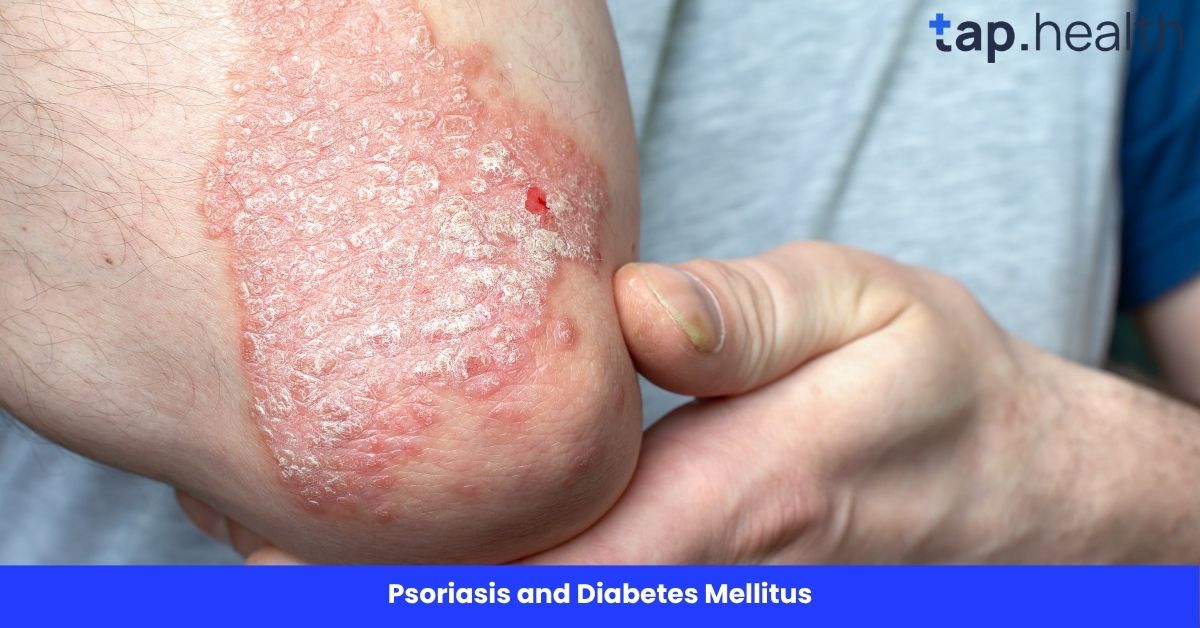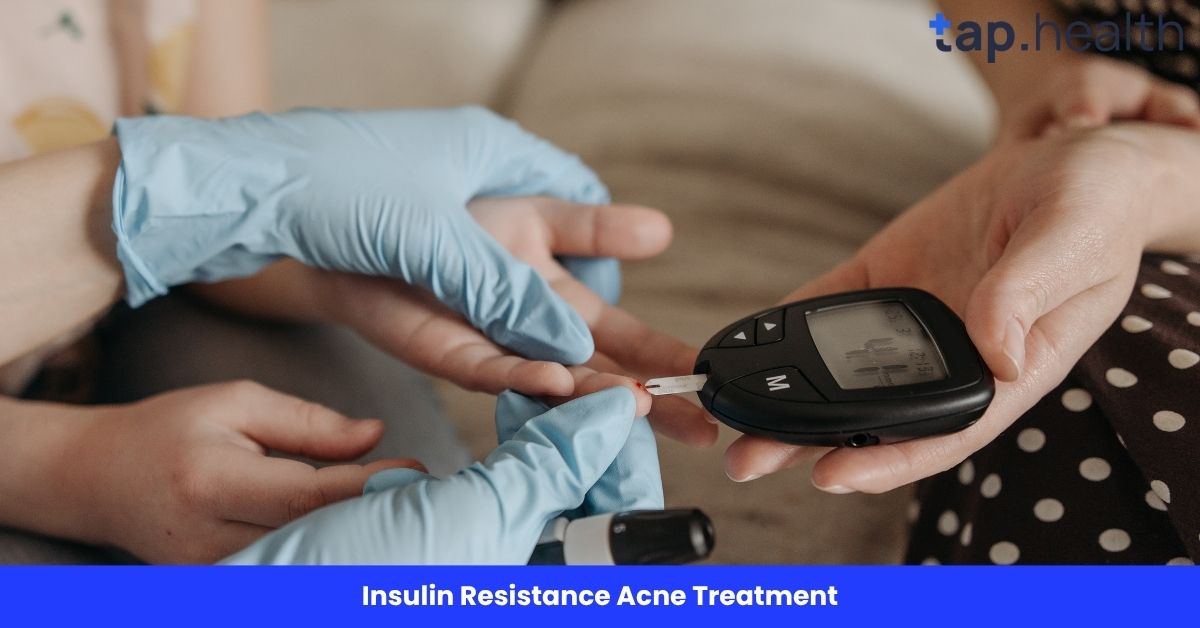Psoriasis and diabetes mellitus are both chronic conditions that affect millions of people worldwide. Although they may seem unrelated, research shows that they often coexist, and the combination of both can make managing your health more challenging. Understanding how psoriasis and diabetes mellitus are connected, their impact on your body, and how to manage both conditions effectively is crucial for your overall well-being.
In this comprehensive guide, we will explore the relationship between psoriasis and diabetes mellitus, their causes, symptoms, and how they can be managed together. If you are dealing with both of these conditions or are concerned about how they might affect your health, this article will provide valuable insights and practical tips for managing them.
What is Psoriasis?
Psoriasis is a chronic autoimmune condition that causes the rapid production of skin cells. These skin cells accumulate on the surface of the skin, forming thick, scaly patches that can be red, inflamed, and often painful. Psoriasis can appear anywhere on the body, including the scalp, elbows, knees, and lower back.
Symptoms of Psoriasis
The symptoms of psoriasis vary depending on the type and severity, but common signs include:
- Red, raised patches of skin covered with silvery scales.
- Dry, cracked skin that may bleed.
- Itching, burning, or soreness.
- Thickened or ridged nails.
- Swollen or stiff joints (psoriatic arthritis).
Types of Psoriasis
There are several different types of psoriasis, including:
- Plaque Psoriasis: The most common type, characterized by raised, red patches covered with silvery scales.
- Guttate Psoriasis: Small, drop-shaped lesions typically triggered by a throat infection.
- Inverse Psoriasis: Red, shiny lesions that appear in skin folds, such as the underarms, groin, and under the breasts.
- Pustular Psoriasis: White pustules surrounded by red skin, often seen on the hands or feet.
- Erythrodermic Psoriasis: A rare and severe form that causes widespread redness and shedding of the skin.
Causes of Psoriasis
While the exact cause of psoriasis is not fully understood, it is thought to be linked to a combination of genetic and environmental factors. The condition occurs when the immune system mistakenly attacks healthy skin cells, leading to rapid cell turnover and the formation of patches.
What is Diabetes Mellitus?
Diabetes mellitus, commonly known simply as diabetes, is a group of diseases that affect how your body processes blood sugar (glucose). There are two primary types of diabetes: Type 1 and Type 2. Both types involve problems with insulin production or function, which leads to high blood sugar levels.
Symptoms of Diabetes Mellitus
Common symptoms of diabetes include:
- Increased thirst and frequent urination.
- Unexplained weight loss.
- Extreme hunger.
- Fatigue or tiredness.
- Blurry vision.
- Slow-healing cuts or sores.
Causes of Diabetes Mellitus
- Type 1 Diabetes: An autoimmune condition where the immune system attacks the insulin-producing cells in the pancreas. It is often diagnosed in childhood or early adulthood.
- Type 2 Diabetes: A condition where the body becomes resistant to insulin or the pancreas does not produce enough insulin. It is more common in adults and is often associated with obesity and a sedentary lifestyle.
Complications of Diabetes Mellitus
If left untreated or poorly managed, diabetes can lead to several serious complications, including:
- Heart disease and stroke.
- Nerve damage (neuropathy).
- Kidney damage.
- Eye problems, including blindness.
- Poor circulation, particularly in the feet, leading to ulcers and infections.
The Connection Between Psoriasis and Diabetes Mellitus
While psoriasis and diabetes mellitus are distinct conditions, research shows that there is a connection between the two. People with psoriasis, particularly those with severe cases, may be at a higher risk of developing diabetes mellitus, especially Type 2 diabetes.
Shared Risk Factors
Several factors may contribute to the link between psoriasis and diabetes mellitus:
- Chronic Inflammation: Both psoriasis and diabetes are associated with chronic inflammation. In psoriasis, the immune system attacks skin cells, leading to inflammation and skin lesions. In diabetes, chronic inflammation can affect insulin sensitivity and lead to insulin resistance.
- Obesity: Obesity is a major risk factor for both conditions. It can trigger inflammation in the body, contributing to the development of both psoriasis and Type 2 diabetes.
- Insulin Resistance: People with psoriasis, especially those with severe forms, may develop insulin resistance, a hallmark of Type 2 diabetes. Insulin resistance occurs when the body’s cells no longer respond effectively to insulin, causing high blood sugar levels.
- Genetic Factors: Both psoriasis and Type 2 diabetes have genetic components. Certain genes related to the immune system may predispose individuals to both conditions.
Increased Risk of Diabetes in People with Psoriasis
Studies have shown that individuals with psoriasis, particularly those with more severe forms, are at a higher risk of developing Type 2 diabetes. This risk is believed to be due to the chronic inflammation associated with psoriasis, which can affect insulin function and lead to insulin resistance.
How Diabetes Affects Psoriasis
On the other hand, diabetes can exacerbate psoriasis symptoms. High blood sugar levels can interfere with the skin’s ability to heal, making psoriasis flare-ups more difficult to manage. Additionally, poor circulation and nerve damage, which are common in people with diabetes, can lead to more severe skin complications, including psoriasis.
Managing Psoriasis and Diabetes Mellitus Together
Managing both psoriasis and diabetes mellitus can be challenging, but it is possible with the right approach. Here are some essential tips for managing both conditions simultaneously.
1. Maintain Stable Blood Sugar Levels
One of the most important aspects of managing diabetes is maintaining stable blood sugar levels. High blood sugar can worsen psoriasis symptoms and delay healing. By keeping your blood glucose levels within a healthy range, you can reduce the impact of diabetes on psoriasis.
Tips for Managing Blood Sugar:
- Eat a balanced diet that includes low glycemic foods to help stabilize blood sugar levels.
- Exercise regularly to improve insulin sensitivity and manage blood sugar levels.
- Monitor blood sugar levels regularly and adjust your diabetes medication as needed.
2. Follow a Skincare Routine for Psoriasis
Taking care of your skin is crucial when managing psoriasis. A proper skincare routine can help soothe the skin, reduce irritation, and prevent flare-ups. Use gentle, fragrance-free products and avoid harsh chemicals that can worsen psoriasis.
Tips for Psoriasis Care:
- Use topical treatments such as corticosteroids, vitamin D analogues, or coal tar to reduce inflammation and scaling.
- Moisturize regularly to prevent dryness and cracking.
- Avoid scratching to prevent skin damage and infections.
- Consider phototherapy if prescribed by a doctor, as it can help manage psoriasis symptoms.
3. Manage Stress Levels
Stress is a known trigger for both psoriasis and diabetes. High stress levels can worsen psoriasis flare-ups and make it harder to control blood sugar levels. Incorporating stress-management techniques into your daily routine is essential.
Stress-Relief Tips:
- Practice relaxation techniques such as meditation, deep breathing, or yoga.
- Exercise regularly to relieve stress and improve overall health.
- Get enough sleep to help manage stress and support healing.
4. Monitor for Complications
Regular check-ups with your healthcare providers are essential when managing both psoriasis and diabetes. Your dermatologist can help monitor your skin condition, while your endocrinologist can help manage your diabetes. Regular monitoring will help catch any complications early and prevent them from worsening.
Treatment Options for Psoriasis in People with Diabetes
There are several treatment options available for managing psoriasis in individuals with diabetes. It is important to work closely with your healthcare provider to find the best treatment plan for you.
Topical Treatments
Topical treatments are often the first line of defense for psoriasis. Common options include:
- Corticosteroids: These are anti-inflammatory medications that can reduce redness and swelling.
- Vitamin D analogues: These treatments help slow down skin cell turnover and are often used in combination with other medications.
- Coal tar: Coal tar can reduce scaling and inflammation.
- Topical retinoids: These medications help reduce skin cell production.
Phototherapy (Light Therapy)
Phototherapy involves exposing the skin to ultraviolet (UV) light to reduce inflammation and slow down skin cell turnover. This treatment is often used for moderate to severe psoriasis and can be effective for those with psoriasis and diabetes. However, it should be used with caution and under medical supervision.
Systemic Treatments
In severe cases of psoriasis, systemic treatments such as biologic drugs or oral medications may be prescribed. These medications work by suppressing the immune system to reduce inflammation and skin cell turnover. They may have side effects, so it’s important to discuss them with your doctor.
Lifestyle Changes to Improve Health
In addition to medical treatments, lifestyle changes can play a significant role in managing both psoriasis and diabetes. Here are some tips to help you maintain a healthy lifestyle:
1. Eat a Balanced Diet
A healthy diet is crucial for managing both conditions. Focus on:
- Low glycemic index foods to help manage blood sugar levels.
- Anti-inflammatory foods such as fruits, vegetables, and omega-3 rich foods like fish.
- Healthy fats such as avocado, nuts, and seeds.
2. Exercise Regularly
Regular physical activity can help control blood sugar levels, reduce inflammation, and improve overall skin health. Aim for at least 30 minutes of moderate exercise most days of the week.
3. Get Enough Rest
Adequate sleep is essential for managing both conditions. Aim for 7-9 hours of sleep each night to help regulate blood sugar levels and reduce stress.
Real-Life Scenario
Consider a patient with moderate-to-severe psoriasis who notices frequent thirst, fatigue, and increased urination. These are common diabetes symptoms. In this case, their dermatologist recommends a routine blood sugar check, which confirms type 2 diabetes. Early monitoring and lifestyle modifications can help manage both conditions effectively.
Expert Contribution
Dermatologists and endocrinologists highlight that systemic inflammation from psoriasis can worsen insulin resistance, increasing the risk of diabetes. Experts suggest regular screening for diabetes in patients with moderate-to-severe psoriasis, especially if other risk factors such as obesity, hypertension, or family history of diabetes are present.
Recommendations Grounded in Proven Research and Facts
- Routine screening: Patients with psoriasis should check blood sugar levels regularly to detect diabetes early.
- Lifestyle management: Maintaining a balanced diet, regular exercise, and weight control can improve both psoriasis and diabetes outcomes.
- Medical management: Medications that target inflammation, such as biologics for psoriasis, may also help reduce diabetes risk.
- Education and awareness: Patients should be informed about the link between psoriasis and diabetes to encourage proactive health monitoring.
How Tap Health Supports Diabetics
Tap Health is a smart, AI-powered app designed to help people with diabetes in India manage their health more effectively. It offers tools to monitor blood sugar, track carbohydrate intake, and stay on top of overall wellness in one convenient platform.
Why Tap Health Makes Diabetes Management Easier
Managing diabetes can be challenging, but Tap Health simplifies the process with practical features and personalized guidance:
Precise Carbohydrate Tracking – Quickly log your meals or take a picture, and the app provides accurate estimates of carbs, calories, and portions, including popular Indian foods.
Glucose Monitoring Made Simple – Record your blood sugar readings and easily see patterns to understand how diet and lifestyle affect your levels.
Automated Reminders – Receive notifications for medications, meals, and glucose checks to ensure you stay consistent without stress.
Personalized Recommendations – The app analyzes your data to provide tailored suggestions for diet, activity, and blood sugar management.
Indian-Focused Meal Guidance – Access a wide range of Indian recipes, regional dishes, and meal plans suited to your culture and preferences.
Progress Tracking and Reports – View trends in your glucose levels and HbA1c over time with clear, easy-to-read charts.
Professional Support – Connect with qualified doctors and dietitians directly through the app for advice and guidance tailored to your needs.
Frequently Asked Questions (FAQs) on Psoriasis and Diabetes Mellitus
1. Can psoriasis cause diabetes?
Psoriasis itself does not cause diabetes, but research suggests that people with psoriasis may be at a higher risk of developing Type 2 diabetes due to shared genetic and environmental factors.
2. How does diabetes affect psoriasis?
Diabetes can worsen psoriasis symptoms by affecting circulation, delaying healing, and increasing the risk of infections. High blood sugar levels can also exacerbate inflammation, making psoriasis flare-ups more frequent and severe.
3. Can I manage psoriasis and diabetes together?
Yes, managing both conditions involves controlling blood sugar levels, following a proper skincare routine for psoriasis, reducing stress, and maintaining a healthy lifestyle. Working closely with your healthcare providers is key to effectively managing both conditions.
4. What is the best treatment for psoriasis in people with diabetes?
Topical treatments, such as corticosteroids and vitamin D analogues, are often effective for managing psoriasis. In severe cases, systemic treatments such as biologics may be used. Always consult your healthcare provider for personalized treatment options.
5. Is exercise beneficial for both psoriasis and diabetes?
Yes, regular exercise is beneficial for both conditions. It helps control blood sugar levels, reduces inflammation, and improves overall skin health. Be sure to monitor your blood sugar before and after exercise to prevent any issues.
Conclusion
Managing both psoriasis and diabetes mellitus requires a comprehensive approach. By understanding how the two conditions are connected and following effective strategies for managing both, you can improve your quality of life. Work with your healthcare team to develop a personalized plan, and make lifestyle changes to support your health. With proper care, you can successfully manage psoriasis and diabetes and enjoy better overall health.



